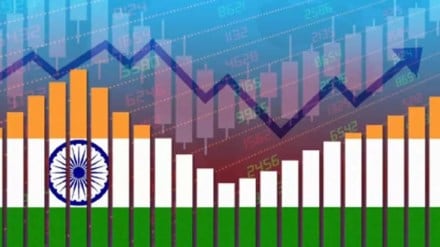The World Bank has raised India’s growth forecast for FY26 to 6.5 per cent from its earlier projection of 6.3 per cent in June. According to the World Bank’s latest South Asia Development Update released on October 7, India is expected to remain the world’s fastest-growing major economy, driven by strong consumption, improved farm output, and rising rural wages.
However, it cautioned that India’s growth next year could be affected by the impact of US tariffs on its exports. The World Bank has trimmed its forecast for India’s growth in the next fiscal year to 6.3 per cent from 6.5 per cent. US President Donald Trump has imposed a 50 per cent tariff (including 25 per cent additional tariff for buying Russian oil) on most exports from India, among the highest of any US trading partner.
US tariffs to weigh on India and South Asia’s 2026 growth
The US tariffs are not expected to impact only India but are also likely to drag South Asia’s overall growth rate in 2026. The report states that South Asia’s growth is expected to remain robust at 6.6 per cent this year, but warns of a slowdown to 5.8 per cent in 2026.
AI and trade barriers among top risks to South Asia’s economy
The World Bank’s twice-a-year regional outlook highlights that while the region continues to lead global growth, several risks could affect its momentum. These include global economic uncertainty, trade policy shifts, socio-political tensions, and disruptions in labour markets due to emerging technologies like artificial intelligence (AI).
“South Asia has enormous economic potential and is still the fastest-growing region in the world. But countries need to proactively address risks to growth,” said Johannes Zutt, World Bank Vice President for South Asia. He added that governments could strengthen productivity and create jobs by maximising the benefits of AI and reducing trade barriers.
High tariffs hurting manufacturing, says World Bank
The report finds that South Asian countries remain among the least open to international trade and finance. High tariffs protect shrinking sectors while hurting manufacturing, as tariffs on intermediate goods are more than double those in other developing economies. Meanwhile, the services sector, which faces lower tariffs, has driven nearly three-quarters of employment growth in the past decade.
The World Bank suggests that careful tariff reductions, especially through free trade agreements, could encourage private investment and job creation. The report also urges countries to prepare for the rapid transformation brought by AI. Although South Asia’s workforce currently has limited exposure to AI, moderately educated young workers in sectors such as information technology and business services are vulnerable to job shifts.
Demand for AI skills rises even as traditional roles decline
Since the launch of ChatGPT, job listings for roles most affected by AI have fallen by about 20 per cent. However, demand for AI-related skills is rising sharply, with such roles offering wages nearly 30 per cent higher than other professional jobs.
“Increasing trade openness and growing adoption of AI could be transformative for South Asia,” said Franziska Ohnsorge, World Bank Chief Economist for South Asia. She emphasised that policy measures to support worker mobility and skill development are essential for attracting investment and sustaining employment.
India’s outlook remains strong
According to the World Bank, India’s economic outlook remains strong despite a slightly lower forecast for FY26/27 due to higher export tariffs. Other South Asian nations show mixed trends; Bangladesh is set to accelerate, Sri Lanka is recovering faster than expected, while Nepal and the Maldives face pressures from political and external factors
